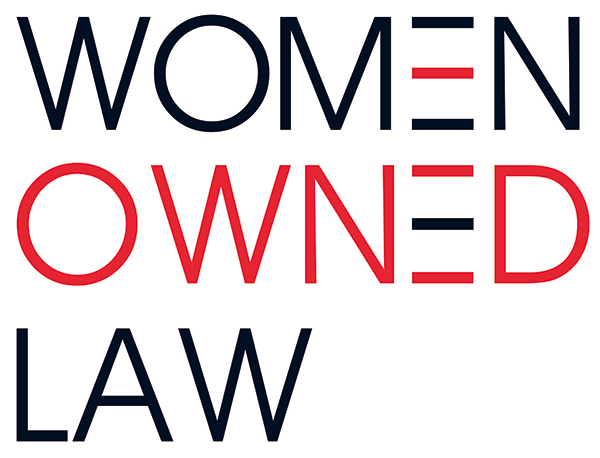You are a partner in a law firm. Lately, somehow, things are not going the same as in the past.
You and your partner(s) decide to separate.
What are the key issues you must address as you re-configure your partnership?
Three members of Women Owned Law discuss their experiences: what they did; when they did it; what they wish they had done sooner or differently.
Whether yours is a two-partner firm, a five-attorney firm or a firm with 30 equity partners, consider how their lessons learned may be relevant as you chart your next chapter.
Let’s set the stage and introduce our commentators:
Dorothy (Doll) Lank left her solo practice in 2015 to join an attorney with an ERISA practice; they worked together for the next seven years. Lank and her then-partner had discussed his eventual retirement at the end of calendar 2022. However, it was a complete shock when in late July he announced that he was leaving the firm two days later, much sooner than she had anticipated. She moved quickly to establish a new firm, KLB Benefits Law Group.
Wendy Samuelson had been an associate and then a non-equity partner in her father’s law firm, with another non-equity partner. When her father retired, she and the other partner bought out her father, and continued running the practice as equal partners. When activity slowed during the COVID pandemic, she reviewed the firm’s financials and found she was disproportionately carrying the weight of the firm. When she approached her partner about creating a more fair formula to divide profits, her partner decided to retire a few years earlier than originally contemplated. Working with an attorney who focuses on dissolving and reconfiguring law firms, Samuelson negotiated an agreement to buy out her former partner. She reconstituted the firm as Samuelson Hause PLLC.
Ariana Tadler was managing partner of a complex and class action litigation firm where she practiced for 20+ years; in the 15+ years during which she served in management, the firm spanned from 25 to more than 50 attorneys. She had led them through growth and re-branding and was poised for yet another round to revitalize the firm. Sensing resistance among her colleagues, plus professionally and personally dissatisfied with the status quo, she considered leaving for another firm or launching her own firm. Tadler pursued parallel tracks: she negotiated with the other partners to revamp the existing firm, and she developed a business plan to transition her key team to another firm or a new standalone entity. She left the firm on a Friday and walked into Tadler Law, her new firm, the following Monday.
Here are some key issues that you may encounter in dissolving or re-configuring your firm.
Plan in Advance
Surprisingly, Lank and Samuelson, despite dealing with clients’ engagement letters and contracts, had no written agreements with their partners regarding their eventual retirement and separation from the firm. As their counterparts neared retirement age, it became apparent to the two women that there would be a change in the ownership and management of the firm. Yet the date of the partner’s eventual retirement was not clearly set and there was little advance preparation.
Lank advises others in this circumstance to articulate a time frame and plan for the dissolution of the partnership. She observed, “We should have taken a harder look at things and adjusted our timing and consciously accelerated our timing. I wish I had thought, maybe last December, Hey, where are we headed with this?”
Lank also recommends having a timeline of activity for taking the steps necessary to form a new firm, with soft deadlines to register the new firm, set up bank accounts and complete other administrative tasks, so that all is accomplished in an orderly fashion.
Hire Outside Counsel and Consultants
Both Samuelson and Tadler hired others to assist in planning for the next stage. Samuelson engaged a forensic accountant “to understand what’s typical in a buyout, especially a matrimonial practice, where clients are with you for one or two years, not for many years.” She also hired a corporate attorney who negotiated the buyout of the partner, arrived at a mutually agreeable formula and timetable for the buyout and, finally, drafted the documents to constitute the new firm. In addition, the firm’s accountant also dealt with the exiting partner regarding the tax implications of the deal.
As a matrimonial attorney familiar with the personal aspects of separation, it’s not surprising that Samuelson focused on being objective and practical. She commented, “I think consulting with these three individuals helped me get a sense of reality and keep the emotion out of it. After all, my partner and I worked together for 27 years.”
Similarly, Tadler said, “We hired a consultant immediately, well before we launched the firm, to do the groundwork that we didn’t have time to do: specifically to assess the realities of responsibility, scope and cost, so that we could determine whether an alternative plan was a viable plan.” This consultant, who is also a lawyer, advised her on technology, phone systems, and a host of other aspects of structuring a nascent firm. Tadler also continued to work with her firm’s accountant.
Lank, operating on short notice, managed the transition by herself. In effect, she wore three hats:
- Dissolving the practice
- Creating a new entity, with legal documentation, firm bank accounts and client trust accounts, plus marketing wherewithal
- Advising clients that the previously discussed retirement of the partner was effective and they could choose which of the two lawyers would represent them.
Accordingly, hiring consultants meant that Samuelson and Tadler could comfortably continue their cases, while Lank was pulled in many directions for the next three months.
One unexpected byproduct of Lank’s conversations with all the firm’s clients was that she generated new business matters for her nascent firm. She also terminated relationships with clients for whom the firm had not worked recently and refunded the money in their trust accounts, relieving her of that fiduciary responsibility.
The Ideal Outcome
All three attorneys agree that they achieved their ideal outcome. Lank and Samuelson are successfully leading practices that are both smaller and more profitable. In fact, by exiting an expensive office lease, Lank had a very solid year. Samuelson, too, had an exceptional year and was able to complete buying out her partner ahead of the planned schedule. Tadler views her new firm as small and mighty. “My focus is doing solid work with good people on great cases that really drive us, that are intellectually challenging and where we make a difference.”
Tadler added, “My key guidance, especially for women, is if you're a good lawyer and you are a better than decent business person, and you are unhappy where you are, you should really take stock in what your skills are and consider what resources are available to you to explore. Is there something you should change up where you are to bring greater joy to and satisfaction from your practice? Or is this a time where you should really be considering making a move – to another firm or out on your own?”
Samuelson advised “What I learned from this experience is that when I decide to retire, I should have a five-year plan, not a five-month plan. If you don’t plan ahead, you may not have the negotiating power to have a good buyout deal. In addition, if you are buying out a practice, make sure that you have your partner introduce you to his/her referral sources and networking groups in order to transfer those relationships.”
If you are considering your next stage, review this sage advice and perhaps consult with your peers. Lank, Samuelson and Tadler are open to talking with you.
Janet Falk is a Public Relations and Marketing Communications professional at Falk Communications and Research. She offers members of WOL a review of their Public Relations and Marketing activities in a Complimentary 30-minute consultation. She guarantees TWO ideas.

